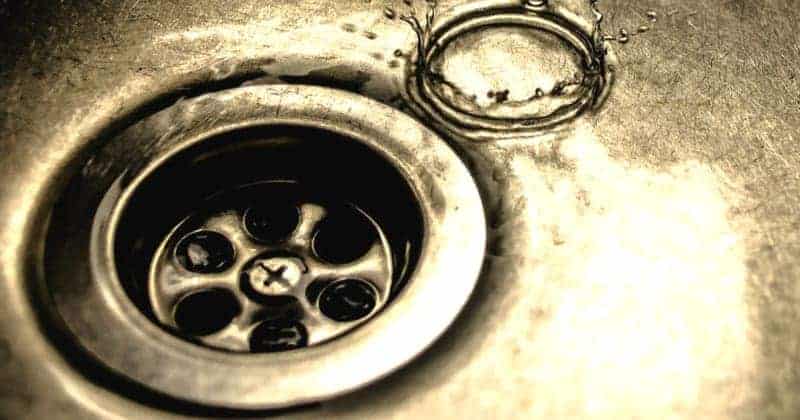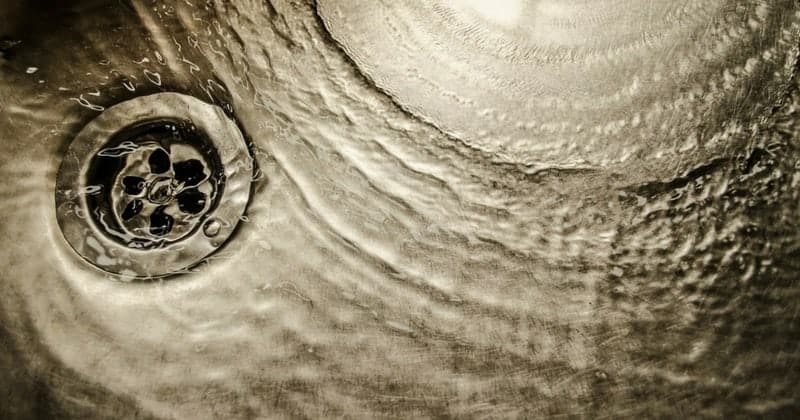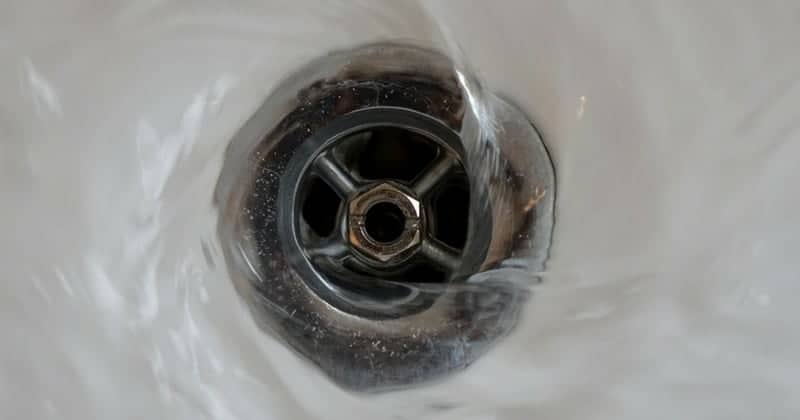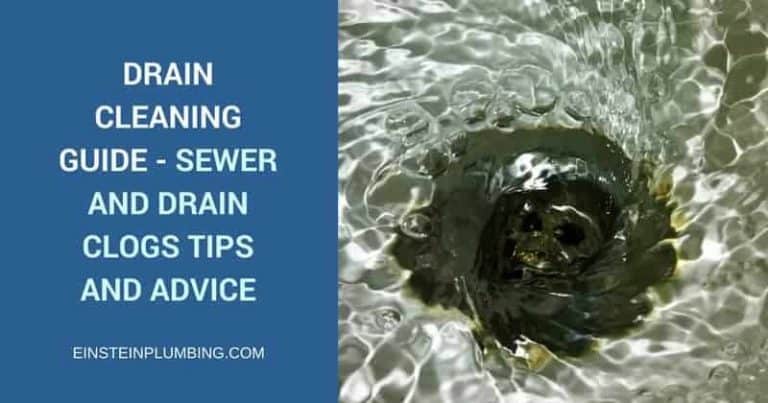Drain Cleaning Guide
Debris accumulated overtime is the principal cause of clogged drains, although there are plenty of other reasons, a clog may lead to flooding, unwanted foul odors, and insect infestation. A clean and proper drain maintenance on a regular basis will help you save both time and money in the future. Slow and clogged drains can be a result of some typical cases:
- Soap residue and organic matter can accumulate in your drain pipes. Oil and grease is an additional problem in kitchen pipes.
- Water sediments — water that has an extreme quantity of dissolved sediments and minerals may assemble on pipe walls.
- Hair can enclose everywhere your sink stopper, accumulate in the bow of your drain pipe or gradually build up with other elements inside the drain.
- Objects and things such as a ring or a tiny toy can stick in the tube of your pipe.
- Pieces of food can dispose of in the sink of your kitchen can get stuck inside the drain pipes.
- Clusters of paper can build up and stick in your toilet trap.
Organic materials and mineral deposits like grease build up inside your drainage which will slow it down and become accessible for hair, food particles or other obstructions to lodge in the pipe. Drain stoppers, P-traps and horizontal sections of pipe are typical areas where clogs can happen.
Our drain cleaning guide will provide you help on how to maintain and keep your drains debris-free. This guide will also give you useful information on how to determine if your drains are clogged or not.

Spotting A Clogged Drain
Clogged drains may lead to expensive plumbing repairs and can cause inconvenience to your home. Recognizing potential risk and early indications that your drains are in need of cleaning will save you a lot of trouble in dealing with more problems before it starts.
- Slow Drainage Means Clogged Pipes | Slow Draining Sink
Finding out that your sink drains slowly is an early sign of a clogged drain. It will be a lot easier to solve the problem immediately than waiting for it to become worse, paying attention to the water flow of all your frequently used drains is the first step.
- Clogged Pipes Produces Odor and Foul Smell
Foul smell and odor is a noticeable sign waste buildup inside your pipes. Sticky and gluey substances stick to the walls of your pipes and harden through time, causing the material to jam and remain there permanently.
This collection of material is just the start of a stinking drain and promotes the growth of bacteria. Molds and mildew is also an indicator of a clogged drain and discharges a nasty smell. Due to the wet conditions a clogged sink provides, decay has what it needs to start growing.
- Rust Means Clogged Pipes
Rust is also a reason to recognize possible drain clogging due to corrosion. Rust occurs when iron, found in the minerals of water, is introduced to humid air and saltwater. If you see a formation of rust throughout your metal drain, you can only assume it has not proceeded to build inside the walls of your pipes. Take a moment to check the signs of clogged pipes to stop the problem before it begins.

Prevent Clogging with Proper Drain Maintenance
Looking for drain problems is the best approach to start maintaining clear pipes.
Do you often toss leftover food in the garbage disposal?
Do you see hair remaining after using the shower?
The first step in preventing headaches and experiencing troublesome issues is to maintain a clean drain. What looks like a simple fix may, in fact, become a significant issue if the problem is not promptly solved.
Here are a some of the general drain types and what you can do to keep their pipes clean and free of any clogged material:
Kitchen Sink Drain Maintenance
Make sure to dispose and scrape all food leftover to the garbage before washing the dishes. It is advisable that the only substances that should go down the drain are soap and water.
As much as possible, do your best to avoid using a garbage disposal or grease cleaners to dispose of your food waste. Pan residue is also encouraged to be wipe by a clean paper towel and thrown in the trash. It is of utmost importance to never throw grease and oil down your drain or kitchen sink. Oil and grease cling to the side wall of your pipes and hardens, clogging your drains quickly.
Toilet Drain Maintenance
Let’s start with the basic, always remember that there are only two things that are advisable to be flushed down your toilet, water and tissue paper. There may have been some belief that materials like baby wipes, cleansing cloths, and baby wipes that are flushable will not clog your toilet, but they are in fact the leading cause of toilet clogs. It’s better not to take the risk of clogging your bathroom toilet as it will cause you a lot of inconveniences.
When choosing a toilet paper, it is advisable to select or change to a less plush brand and try to use only the necessary amounts to flush down your toilet.
Shower Drain Maintenance
The experience of taking a shower and having your feet soaked in an inch of water because of a slow drain can be an inconvenience. Dealing with a clogged shower drain may be disgusting and annoying due to the water that hovers around your feet. One of the best investment for your shower is a shower strainer to filter all soap residues and unwanted materials that may go down your shower sink. A shower filter is low-maintenance, removable, and you can clean it once a week.
Do-it-yourself (DIY) Drain Cleaning Devices
Some clogged drains are not that hard to solve, and you can do it on your own. If you need a quick fix for drain clogs, here are a few tips that can help you save more time and money.
Drain Cleaning with a Plunger
Plungers are used to unclog different kinds of sinks and drainage. The process in which the plunger creates a vacuum pressure to release any clogs is what makes it efficient for a quick fix. A plunger will be the first tool to try out when clearing your drain and to also save you from the mess with other drain cleaning tools.
Understanding how to use a plunger is essential to declogging your drains. The correct way to do it is to first place the rubber head of your plunger against the drain to form a seal around it, not allowing any air to seep through it. Next is to start pushing on the plunger until the rubber head inverts, then release it till the head leaps back in its original position. You may need to repeat this steps more than once until the water begins to drain.
If the plunger is unable to clear out the clog in your drain, you may want to try other drain cleaning tools.
Drain Cleaning with a Snake Drain or Sink Auger
Snake drain is a professional tool plumber use to clean your drain. It requires a bit of skill and experience than the regular plunger. The advantage of using a snake drain or a sink auger is that it can reach down further into the pipes to remove and collect the clogged object.
How to use a Snake Drain
- Remove any screen or cover from your drain to get access to the inner pipes such as a hair trap or tub drain.
- Insert the cable of the snake drain while rotating the cable handle in a clockwise motion and continuously pushing through inside. Remember to have a firm grip a few inches from the cable.
- Try to determine the location of the clog inside the pipes by sensing resistance while inserting the snake drain.
- Once you discover the clog, try your best to hook it by lightly pulling up and pushing down, breaking any blocking matter inside.
- Continue driving through the pipes with your snake drain until you can feel the resistance is gone.
- Pull the snake drain out carefully and slowly so that the clogged materials will hang on and will not fall back to your drain.
- After removing your snake drain from the pipes, run hot water through your drain to see if the problem is already solved.
Drain Cleaning with Chemical Drain Cleaners
Chemical drain cleaner is a fast-acting solution for clogs because of the high concentration of lye and quantity of sulfuric acid present within the substance. It is usually the next option if your plunger and snake drain didn’t work or solved the clogging issue.
It is imperative to follow every bit of warning labels and instructions included in your chemical drain cleaner. Each product and brand has a specific way and usage characteristics. It is also advisable to run sufficient amount of water after the process to remove any trace of chemicals present in your sink or drain.
Drain Cleaning with Natural Drain Cleaners
Natural drain cleaners is a preferred solution and method for people who may have children present at home. It is mostly used to avoid chemical residue and foul smell during drain cleaning treatment and administration. It gives you lesser risk from potentially hazardous chemicals that may contaminate your home and children. The top choice for natural drain cleaners is baking soda, vinegar, lemon juice, salt, borax, and running hot water.
Drain Cleaning Services from Professional Plumbers
In most cases, we may need the help of professional licensed plumbers to solve our clogged drain problems swiftly and hassle-free.
Professional plumbers may add some cost, but they can provide an efficient service and solution right away, especially for busy people that have no time to do it on their own.

Getting a Plumber for Drain Cleaning
The best place to look for a plumber is online. There are hundreds of service listing on the internet, and searching for a plumber near you won’t be too much of a hassle. You can even check for recommendations and service rating to be sure you are getting the right plumber to solve your problem.
If you need to be sure that you won’t have any issues and recurring problems with your clogged drains in the future it is advisable to get your drains checked and cleaned regularly. A clogged drain can lead to more problems in the future; prevention is always the best solution.
Drain Cleaning Plumbers in Oregon
If you’re looking for a trusted, reliable, and professional plumber to solve your clogged drain issues, Einstein Pros can take care of you. Plumbing services available anywhere in Oregon, call at +1 888-671-7767.
